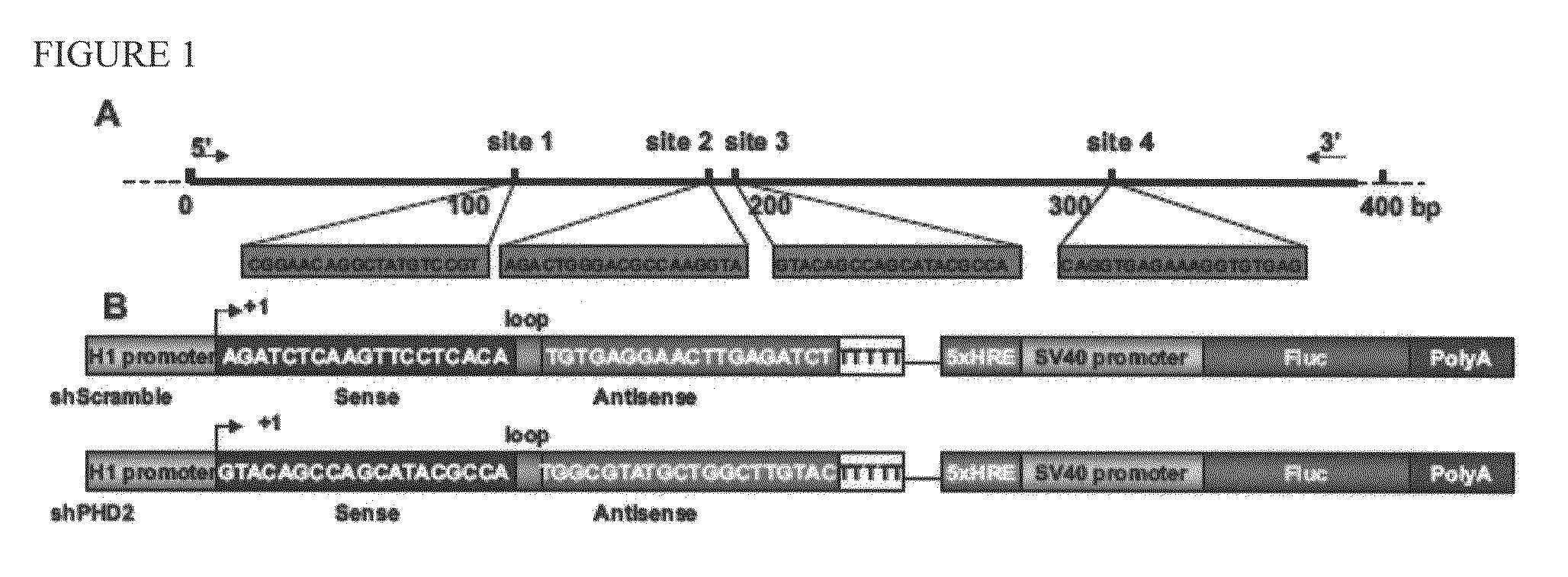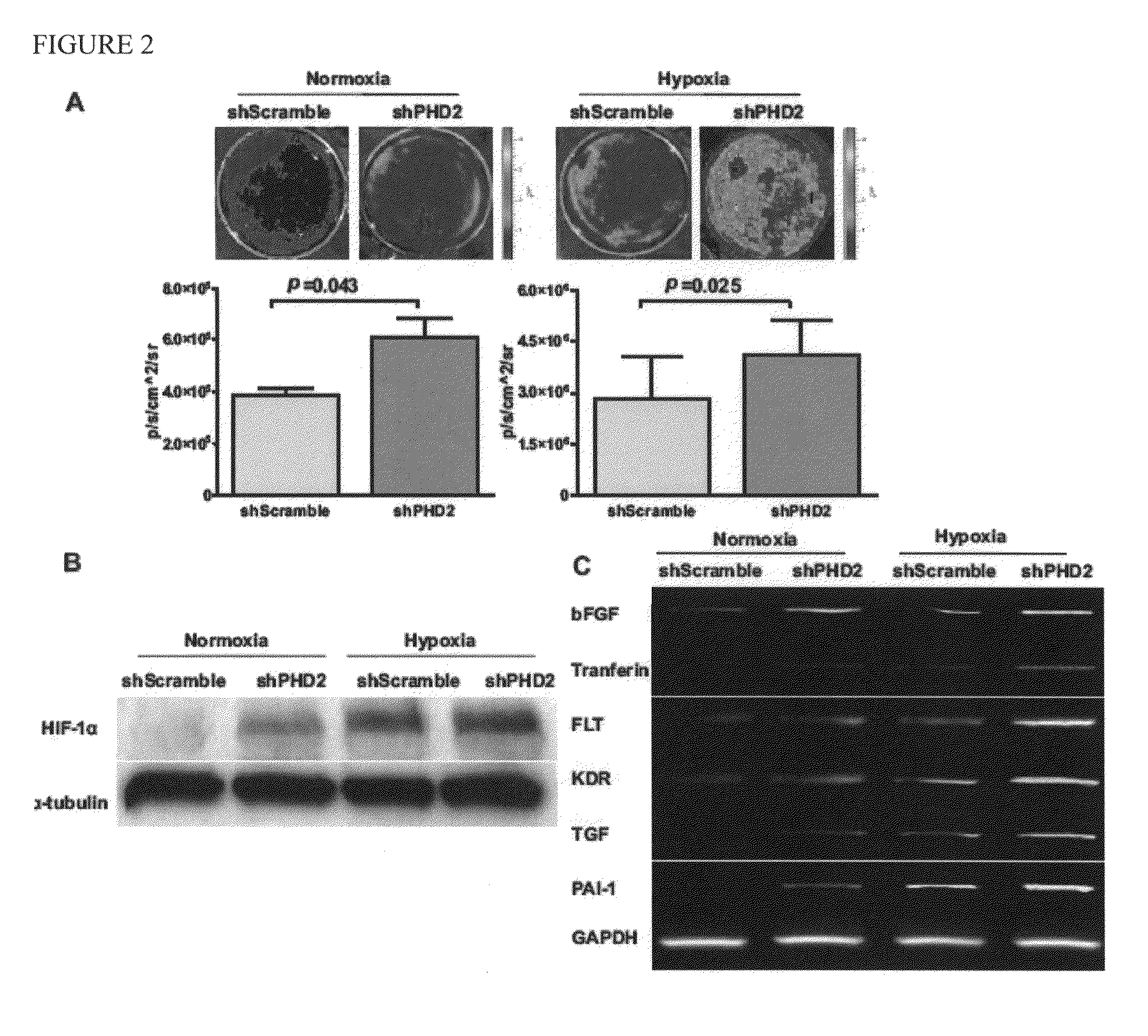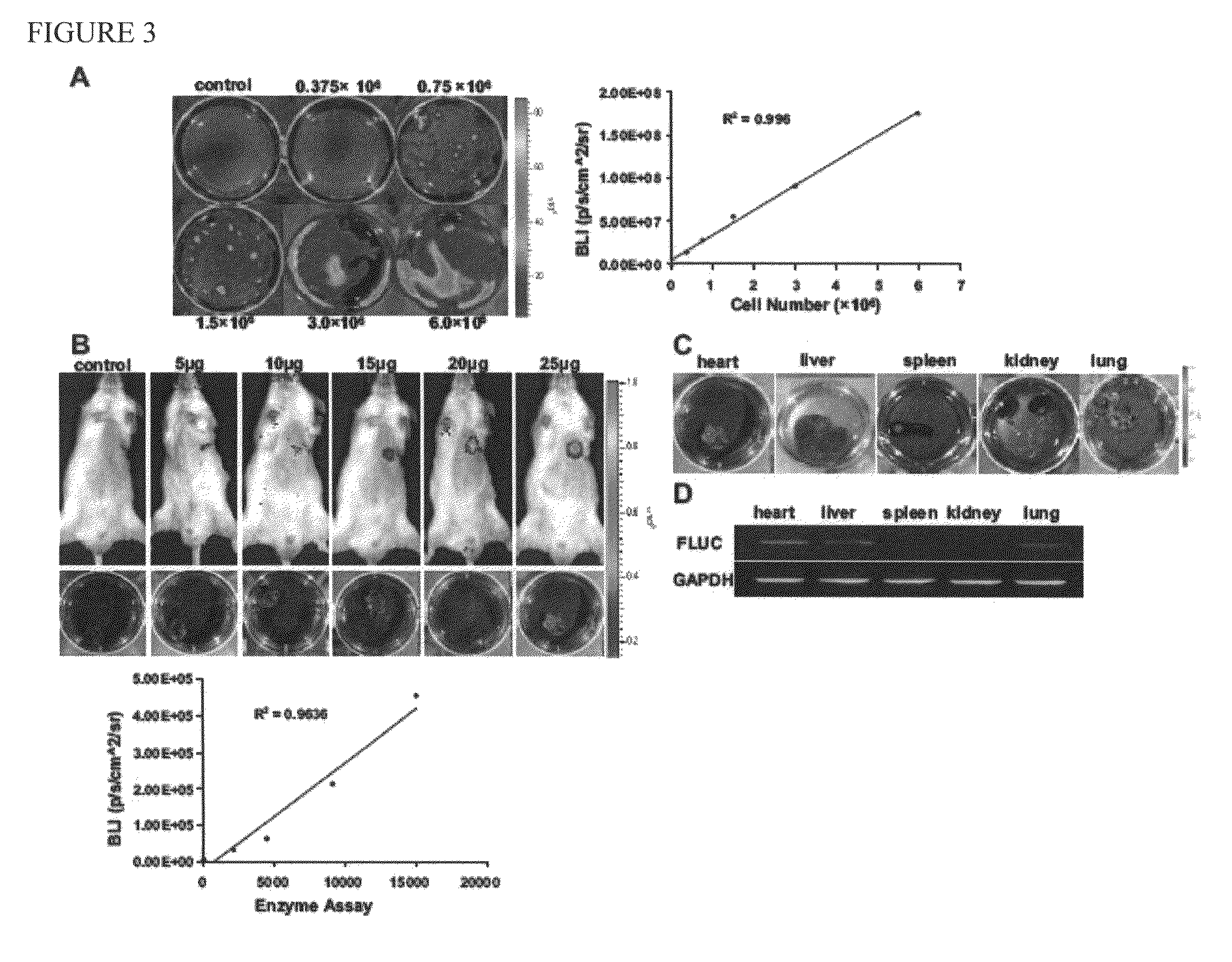Use on minicircle vectors for cardiac gene therapy
a technology of minicircle and gene therapy, applied in the direction of cardiovascular disorder, genetic material ingredients, drug compositions, etc., can solve the problems of slow recombination events, significant number of patients will still have refractory angina, and the technique relying on homologous recombination, so as to enhance neoangiogenesis, improve ventricular function, and early onset
- Summary
- Abstract
- Description
- Claims
- Application Information
AI Technical Summary
Benefits of technology
Problems solved by technology
Method used
Image
Examples
example 2
Enhancing HIF-1α by Double shRNA Knockdown in Murine Myocardial Infarction
[0111]Ischemic heart disease (IHD) is the number one cause of morbidity and mortality in the US. In this study, we utilized a non-viral minicircle vector carrying two shRNA targeting sites. Under normoxic conditions, HIF-1α is hydroxylated at its Pro402 and Pro564 residues by HIF-1 prolyl hydroxylases (PHD2). In addition, the C-terminal transactivation domain of HIF-1α is hydroxylated at Asn803 by the factor inhibiting HIF-1 (AsPHD), which represses the transcriptional activity of HIF-1α. We hypothesis that double short hairpin RNA (shRNA) interference knockdown of PHD and AsPHD2 can be used for treatment of IHD by enhancing several proangiogenic genes downstream of HIF-1α.
[0112]Method: PHD2 and AsPHD was cloned from mouse embryonic stem cells. The best candidate shortairpin sequence for inhibiting PHD2 (shPHD2) and AsPHD (shAsPHD) was inserted into the minicircle vector with the H1 promoter. Another construct...
example 4
Overexpression of HIF-1-Alfa Utilizing Non-Viral ‘Minicircle’ Gene Therapy Improves Neovascularization in Peripheral Artery Disease
[0139]Hypoxia Inducible Factor-1-Alfa (HIF-1-Alfa) promotes (neo)angiogenesis in ischemic tissue by regulating over 60 genes including VEGF and FGF. Short hairpin RNA interference targeting PHD2 (shPHD2) prevents HIF-1-Alfa degradation. Here we studied the effect of shPHD2 injection on neovascularization in a mouse hind limb ischemia model. We compared the use of the recently developed Minicircle (MC) vector with the conventional Plasmid (PL) vector.
Methods:
[0140]The in vitro kinetics of MC incorporation were compared with PL incorporation kinetics by measuring Bioluminescence imaging (BLI) signals after firefly Luciferase (Fluc) transfection of mouse C2C12 myoblast cells. The cells were transfected with 2 ug of MC-Fluc or equimolar 4 ug of PL-Fluc using Lipofectamine 2000 (Invitrogen) according to the manufacturer's protocol. BLI was performed with the ...
example 3
[0149]HIF-1 is a master regulator which activates more than 60 genes including VEGF and FGF. PHD is a negative regulator of HIF-1 and hence inhibition of PHD can induce HIF-1. We have used minicircle vector to express short hairpin PHD2 (shPHD2) in porcine myocardial infarction (MI) model to assess the efficacy of shPHD2 for improving cardiac function.
[0150]Minicircle preparation was performed following the protocol previously described by Chen and coworkers (Chen et al., 2005). A total of 5 pigs weighing 45-60 kg were tested with 5 mg of minicircles injection each. Pigs were sedated with ketamine hydrochloride (20 mg / kg, intramuscularly) and anesthetized with a bolus infusion of thiopental sodium (5.0-7.0 mg / kg intravenously), followed by endotracheal intubation. General endotracheal anesthesia was established with 3.0% isoflurane at the beginning of the surgical preparation, and maintained with 1.0% throughout the experiment. The LAD coronary artery was occluded 3 mm distal to the...
PUM
| Property | Measurement | Unit |
|---|---|---|
| time | aaaaa | aaaaa |
| weight | aaaaa | aaaaa |
| weight | aaaaa | aaaaa |
Abstract
Description
Claims
Application Information
 Login to View More
Login to View More - R&D
- Intellectual Property
- Life Sciences
- Materials
- Tech Scout
- Unparalleled Data Quality
- Higher Quality Content
- 60% Fewer Hallucinations
Browse by: Latest US Patents, China's latest patents, Technical Efficacy Thesaurus, Application Domain, Technology Topic, Popular Technical Reports.
© 2025 PatSnap. All rights reserved.Legal|Privacy policy|Modern Slavery Act Transparency Statement|Sitemap|About US| Contact US: help@patsnap.com



